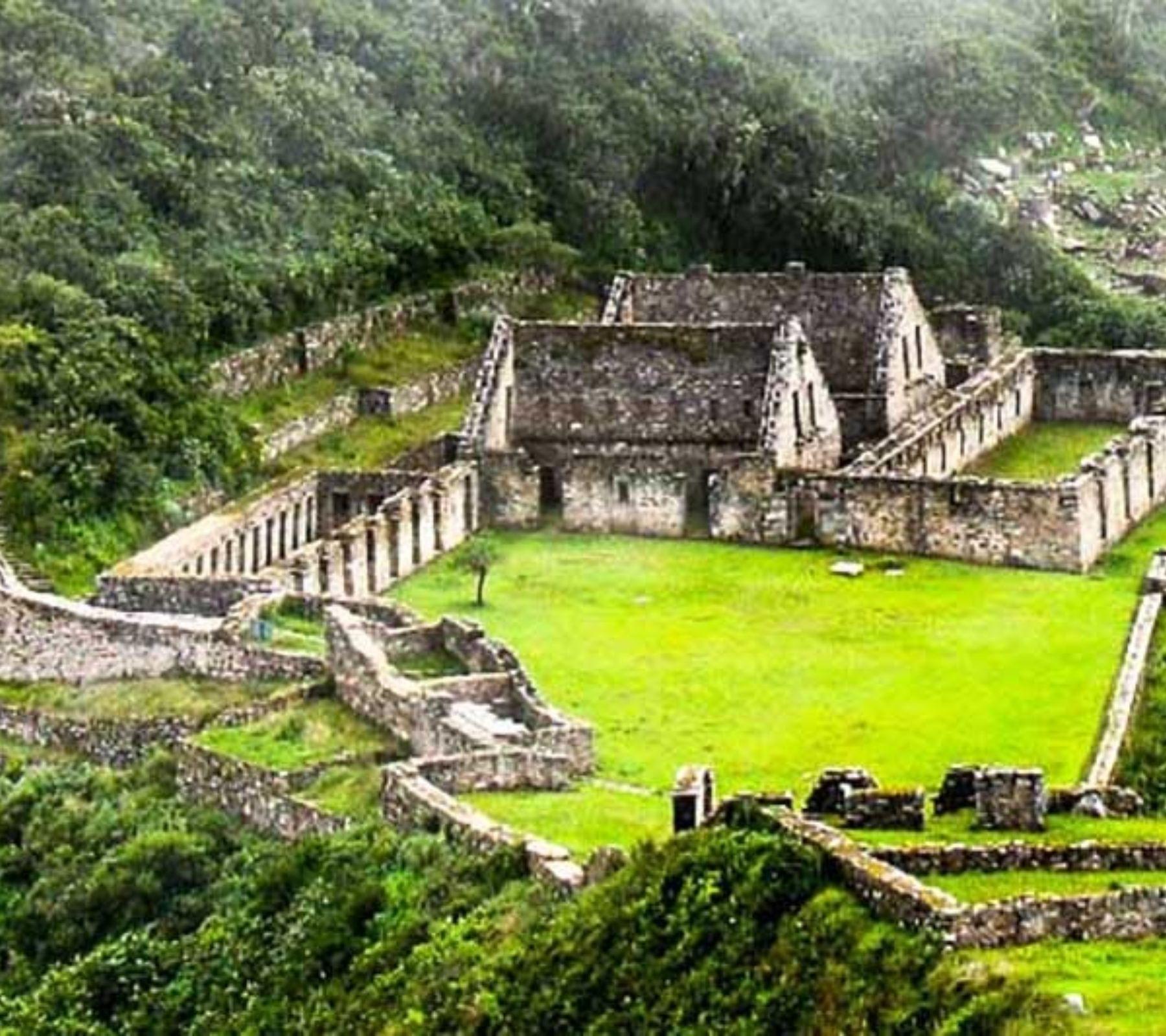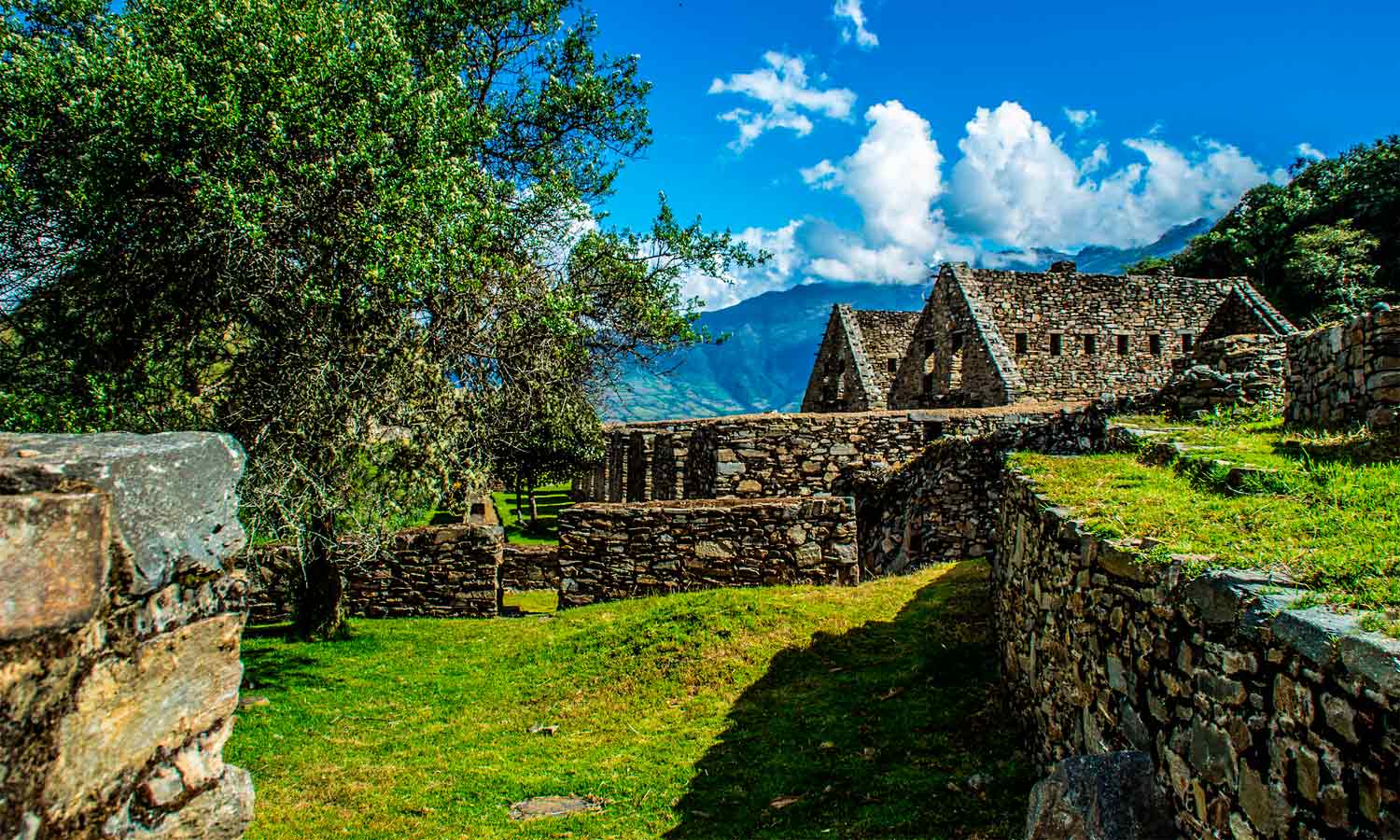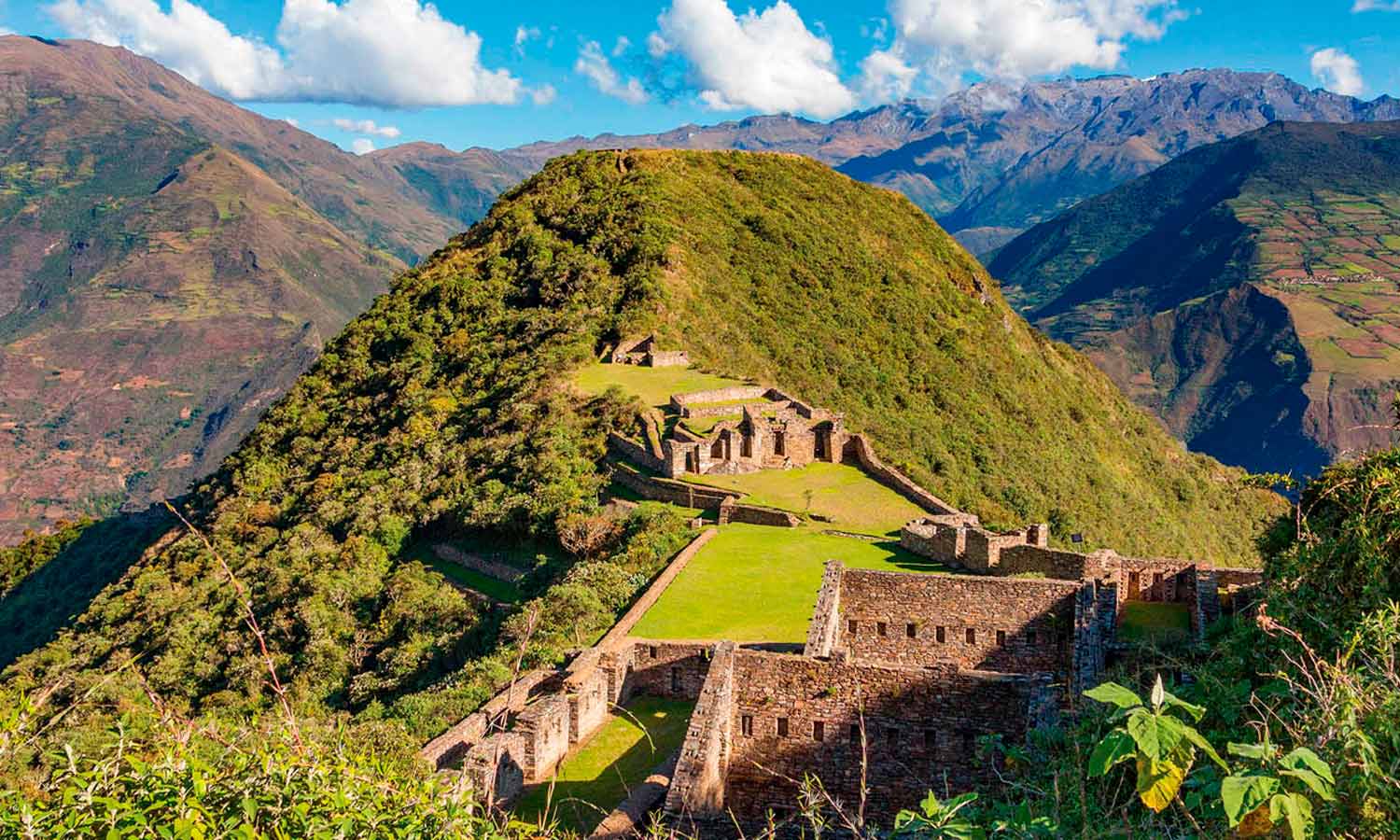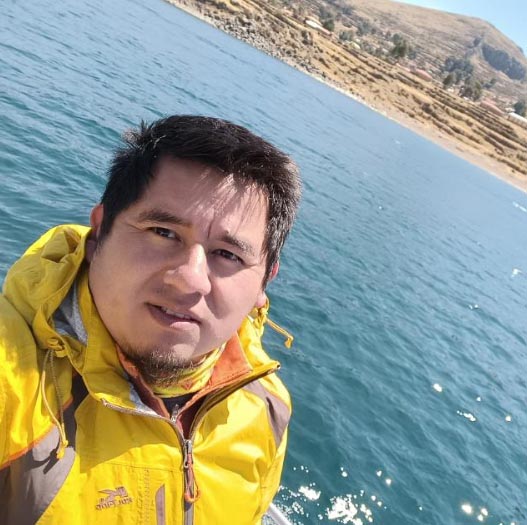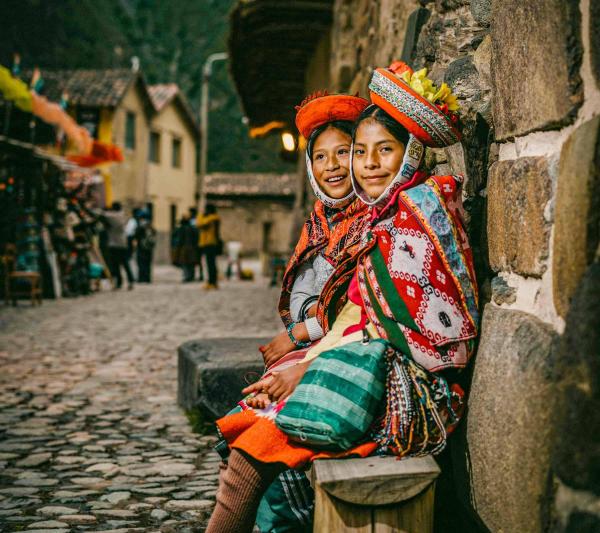If you are asked about the most famous monument in Peru, the first name that comes to mind is probably Machu Picchu.
The ruins of this ancient Inca citadel are a symbol of the country and are visited by hundreds of thousands of tourists from all over the world every year.
But, despite widespread belief, Machu Picchu is not unique in its kind.
Elsewhere in the Department of Cusco, also in the Andean heights, stands the archaeological site of Choquequirao, similar Inca ruins, but much less known and frequented.
Some have called it "the other Machu Picchu". Others describe it as "Machu Picchu's little sister". If so, it is still much less famous than its older sister.
If the facilities to get to Machu Picchu are so many that it has become a mass tourist destination, Choquequirao is much more demanding for the traveler who wants to know its secrets.
This is their story.
A journey from high altitude
Hidden in an isolated area of?? The Andes mountain range, the citadel of Choquequirao requires time and effort from anyone who wants to visit it. All the routes to it take at least two or three days on foot.
You have to fly to Cusco and from there drive several hours to the town of Capuliyoc. That is where most of those who venture to visit it begin their itinerary.
A certain physical and mental preparation is required, since the route runs through the Cusco mountains, more than 3,000 meters above sea level, where temperatures can be very cold at certain times of the year, in addition to the possibility of suffering episodes of soroche, as Peruvians know altitude sickness.
The rugged terrain, crossed by obstacles such as the Apurímac River or the Padreyoc snow-capped mountain, make this route a very popular one for hiking enthusiasts, but also one that advises taking certain precautions before venturing out on it.
Some locals offer their services to guide foreigners and mules to carry their equipment during the climb.
Those who have done it say that the effort is worth it.
Guillaume Flor, a Frenchman who visited Choquequirao with his family, told BBC Mundo that “it was an extraordinary experience.”
“Choquequirao is a magical place where you can admire the architecture of the Incas. It is smaller than Machu Picchu, but the presence of so many tourists kills the magic a bit. When we went there were no more than ten people in Choquequirao”.
Choquequirao: Last focus of resistance
Archaeologists estimate that the archaeological complex of Choquequirao was built around the year 1450. According to Pieter Van Dalen, a researcher at the National University of San Marcos, its construction occurred during the peak of Inca power. In that period, settlements inspired by Cusco, the capital of Tahuantinsuyo, were built with the aim of asserting their presence in various territories of the empire.
Unknown purpose, evident importance
Although its main function has not been determined with certainty, Choquequirao is considered to have had a ceremonial role. It is also hypothesized that it was part of a strategic route to the Amazon region, which included Machu Picchu.
Retreat and defense against the Spanish advance
Its location in a difficult to access area has supported the theory that it was one of the last refuges of the Incas against the Spanish invasion during the first decades of the 16th century. The magnitude of the site, more than 522 thousand hectares, and its proximity to Cusco reinforce the idea that it was an enclave of great relevance. Van Dalen indicates that it could have housed about 2,000 people, many of whom would have been transferred from other regions of the empire to perform agricultural, administrative, or service functions.
Abandonment and rediscovery
After the fall of the Inca Empire, Choquequirao was forgotten. It was not until 1993 that archaeological excavations began, allowing much of the site to be recovered. According to the Ministry of Culture of Peru, approximately 60% of the structures found have been exposed so far.
Twelve sectors to explore
Currently, the complex is divided into a dozen sectors. Among its buildings, the following stand out:
- The House of the Priests, with a ritual function.
- The Main Houses, located next to the plaza, probably inhabited by high-ranking individuals.
- The Terraces of the Llamas, agricultural terraces decorated with figures of camelids, traditional symbols of the Andes.
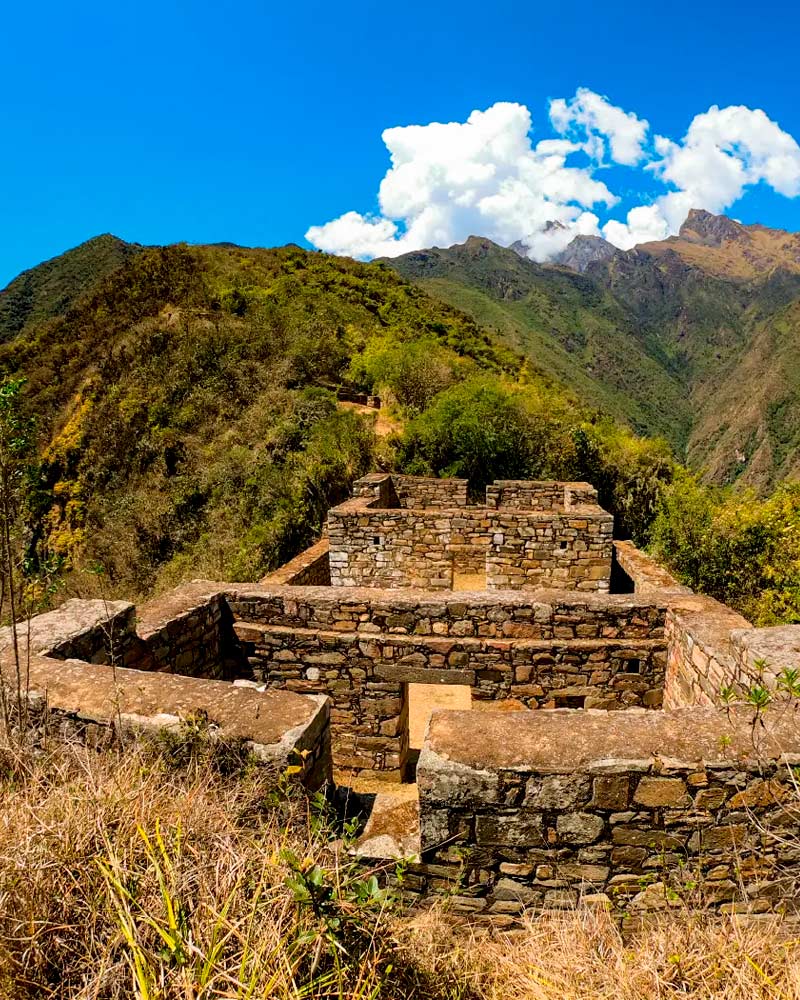 |
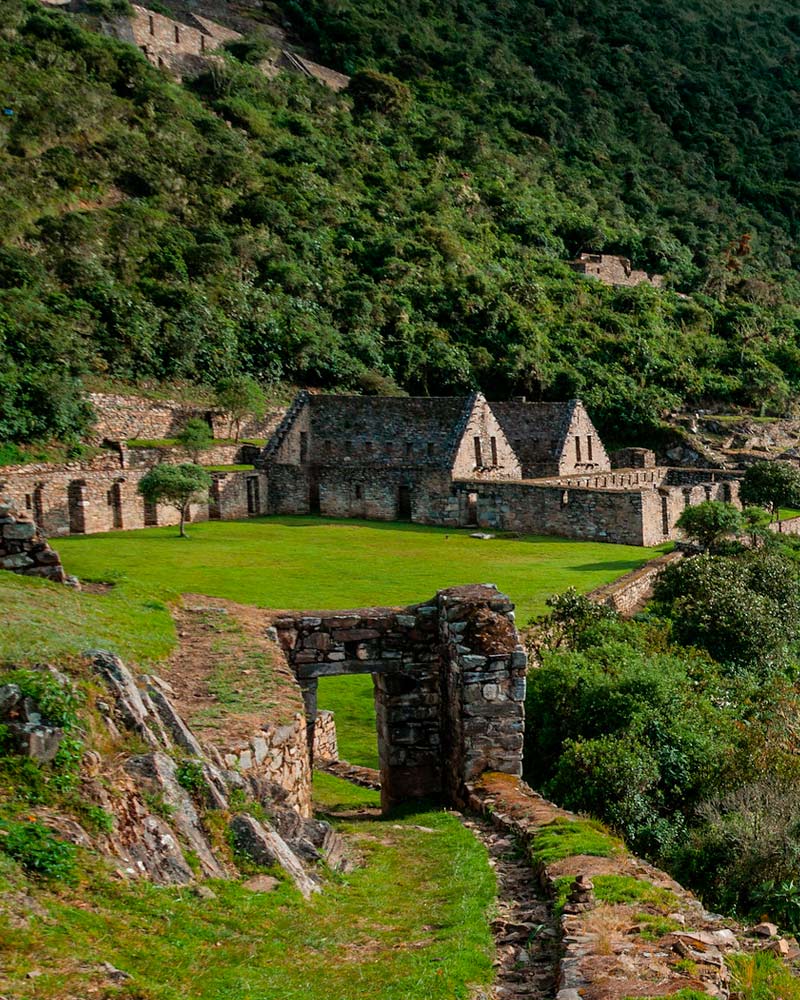 |
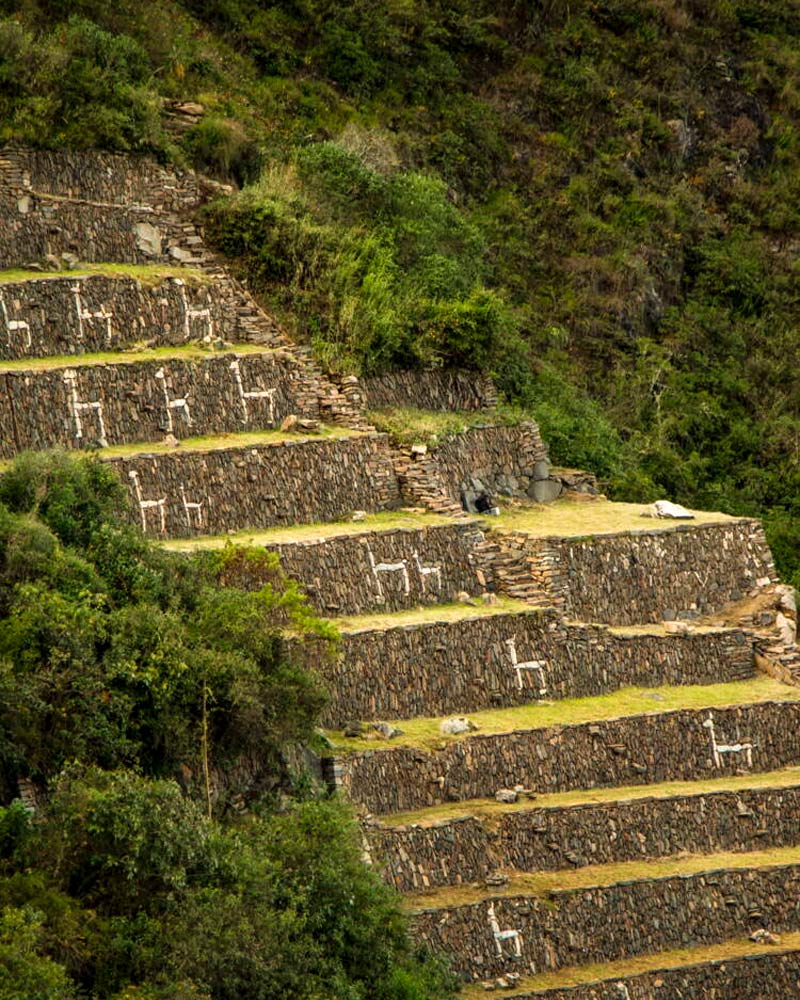 |
A sparsely visited, but promising destination
Three kilometers from Choquequirao is the hamlet of Marampata, where about 40 families live, subsisting on cultivation and tourism. On average, the site receives about 9,800 visitors a year, a modest figure compared to the more than one million people that Machu Picchu received in 2022 alone. This difference has raised concerns about the sustainability of tourism in archaeological sites, while Choquequirao Peru continues to develop on a local scale, with the direct participation of the inhabitants.
Stories from the road
Nancy Tapia, a local guide, is one of the people who has managed to generate income thanks to this destination. "Many Peruvians come, and also foreigners from different parts of the world", she comments. According to official data, French tourists are the most frequent visitors. Tapia assures that those who arrive are usually amazed, not only by the ruins, but also by the walk and the natural environment.
Landscape and tranquility for the adventurous traveler
Choquequirao offers something that few destinations provide: an experience surrounded by silence, mountains, and authenticity. Its isolation and natural beauty have made it a highly valued site for those who enjoy physical effort and exploration.
How to get to Choquequirao?
The only way to get to Choquequirao is by land. Currently, the main route is to the town of Cachora (2,903 m.a.s.l.), 3 or 4 hours by road from the city of Cusco (2 hours from the city of Abancay).
There, the walk to the Inca archaeological site begins. The route passes through important points such as Capuliyoc, Maranpata and Sunchupata. It is estimated that from Cachora, after 32 kilometers on foot you reach Choquequirao.
What is the weather like?
The archaeological site of Choquequirao is located at 3,033 m.a.s.l. The climate is mild with cold at night. However, the tourist will not stay in the Inca enclosure until after sunset.
However, the road that leads to the top of Choquequirao is hot due to the proximity of the Apurímac canyon. It is estimated that the temperature at the archaeological site varies between 5º C and 25º C.
What is the flora and fauna like in Choquequirao?
Choquequirao is home to a diversity of animals and birds such as the condor, foxes, vizcachas, pumas, hummingbirds, spectacled bears and the cock of the rock. In addition, like Machu Picchu, a great variety of orchids are concentrated there.
Choquequirao on your own and without a tour?
Although many tourists choose to get to Choquequirao with a tour, it is also possible to do so on your own. To do so, you must follow the usual route and pay the entrance fee at the entrance gate to Choquequirao.
Important information to get to Choquequirao on your own:
- You can start the trip by bus to the town of Cachora from the city of Cusco or Abancay. You can use low-cost public transport from both cities.
- From the town of Cachora, the trekking route begins along well-marked paths.
- When walking on your own, it is important to calculate the weight of your backpack. Food should last at least 5 days but should not weigh more than necessary.
- The normal tour lasts 4 days and 3 nights. When doing it on your own, the visitor may take more or less time.
- Once in Choquequirao, you must pay the entrance fee (tours include the entrance fee). With this ticket, the visitor can spend the night in the camps surrounding the Inca archaeological site.
What to bring on a trip to Choquequirao?
Whether with a tour or on your own, there are some things necessary for all tourists visiting Choquequirao:
- Sunscreen.
- Mosquito repellent.
- Cap or hat.
- Sunglasses.
- Walking sticks.
- Rain poncho (in case of rain).
- Sleeping bags (not included in the tours).
- Trekking shoes.
- Trekking backpack.
- Food.
When is the best time to travel to Choquequirao?
The best time to travel is between April and October. Choquequirao has two seasons:
- Rainy season (November to March): characterized by frequent rainfall. The sun is not as intense but rain can be detrimental to hiking.
- Dry season (April to October): characterized by less frequent rainfall. The days are hotter and the nights are colder. However, the low chance of rain favors hiking.
Other interesting blogs:
- Where is Machu Picchu?
- Machu Picchu Tickets: Upgrade guide 2024
- Skylodge Adventures Suites
- Machu Picchu Weather
If you want to live this great experience do not hesitate to contact us. Reserve our guided trips to Machu Picchu by contacting our travel experts and you will be closer to completing your adventure:
